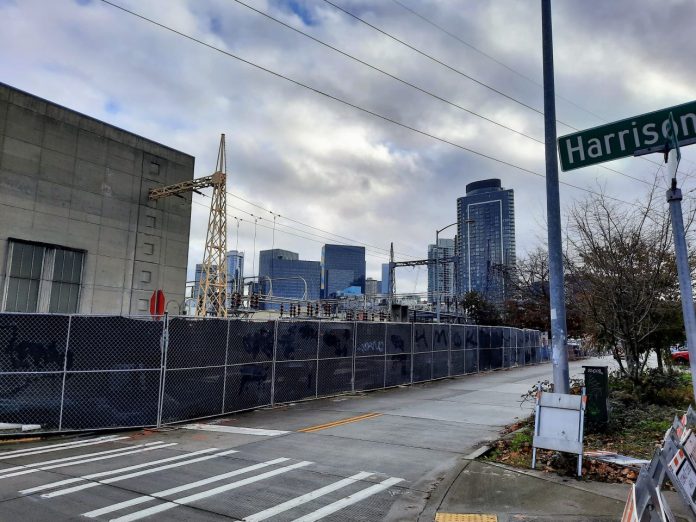
Business leaders contend a 7th Avenue station comes with ill-considered utility relocation costs and convinced the agency to study their 5th Avenue alternative.
The Sound Transit Board of Directors has unanimously approved an $851,000 study to assess a new location for a planned South Lake Union station, moving it a few blocks west off the Aurora Avenue corridor to 5th Avenue N. A “Shifted North” station location under Westlake Avenue remains the agency’s preferred alternative for now, but the study could clear the way for a last-minute change to the plan affecting the timeline for the overall Ballard Link light rail project.
Earlier plans had called for Sound Transit to be finalizing its Ballard Link plan by now via a Final Environmental Impact Statement (EIS), but a series of planning hurdles has repeatedly held up the process. Instead, the agency is re-doing its Draft EIS (DEIS) in order to add a handful of late additions to the study. Despite the unanimous vote last week, some boardmembers signaled their patience could be wearing thin.
“I support it today, but there may be a day downstream where I’m asking my good colleagues in the Seattle-King County area to find a way to stay within budget,” Pierce County Executive Bruce Dammeier said Friday.
In contrast, Seattle Mayor Bruce Harrell, who brought the motion, argued the South Lake Union economic engine was vital to the entire region, necessitating further study to minimize construction impacts. Harrell has welcomed further study as he has backed a rotating cast of station alternatives at different points this year, from the Shifted West alterative in May, to the original Westlake option in mid-July, to the Shifted North in late July, to seeming to return to the Shifted West Denny option once more in December as the pairing with a Shifted West station for South Lake Union has come into the mix.
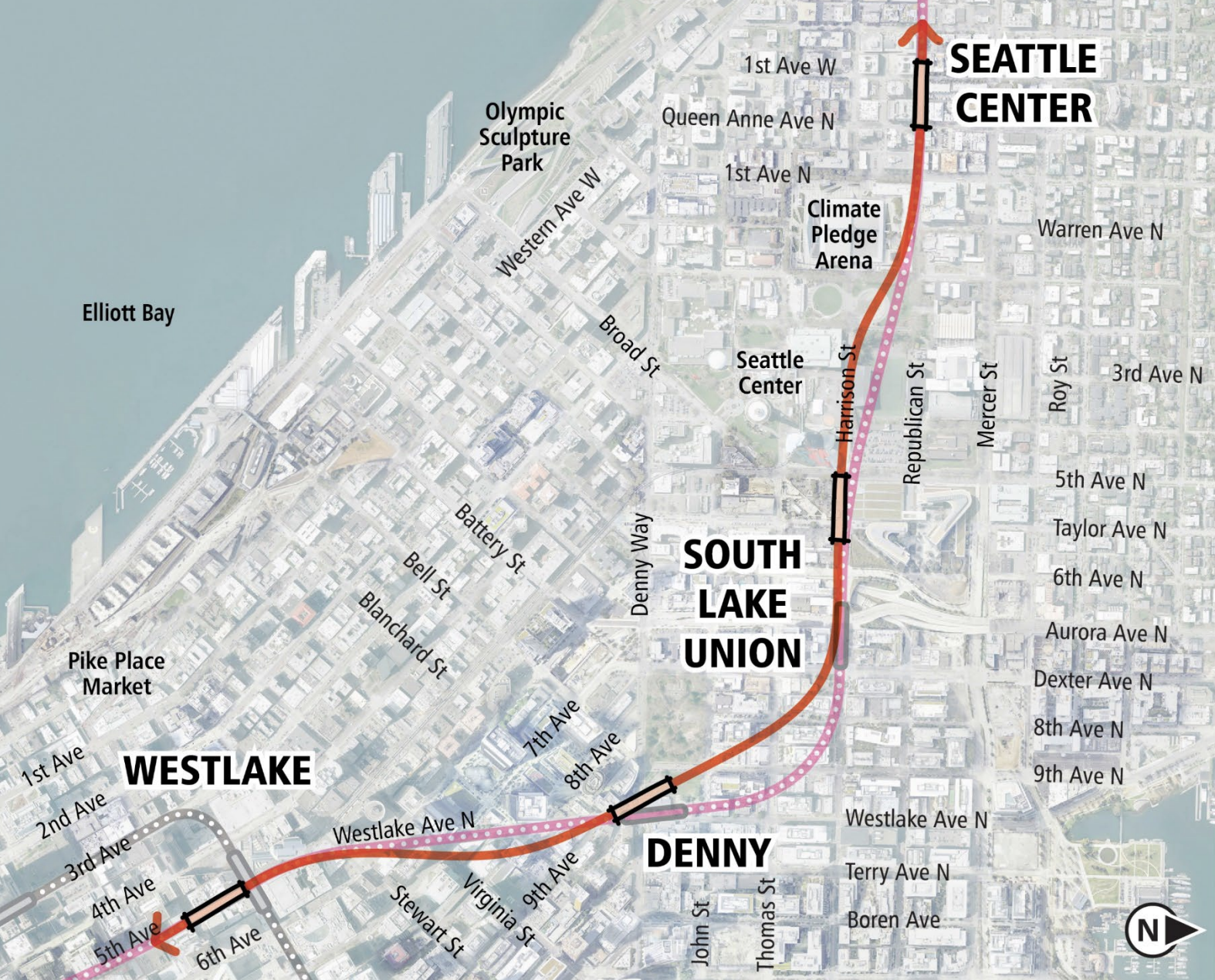
“This [option] further seems to reduce the biggest construction impacts on Westlake and Harrison, which again we’ve explained on other occasions how important that is for all of our regions for our entire state for that matter,” Harrell said ahead of the vote. “And quite candidly, it seems to suggest that this is superior to the consolidation alternative currently included in the DEIS, so we think we still have many questions. This still is worthy of study and it shows a lot of promise.”
The motion sets a goal of quickly conducting the feasibility study and presenting results to the public in April 2024, with board consideration envisioned in May. Beyond addressing constructability, Sound Transit will evaluate “implications for ridership, transit integration, environmental concerns, costs, and other considerations,” an agency update stated.
For the new alternative to stay in contention, the board would need to formally add the 5th and Harrison option to the Draft EIS, which is already being redone due to the late addition of new station proposals for Uptown, Denny, Pioneer Square, and Chinatown-International District (CID) not in the original Draft EIS published in 2022. That DEIS redo had been slated to wrap up in late-2024 barring additional delays.
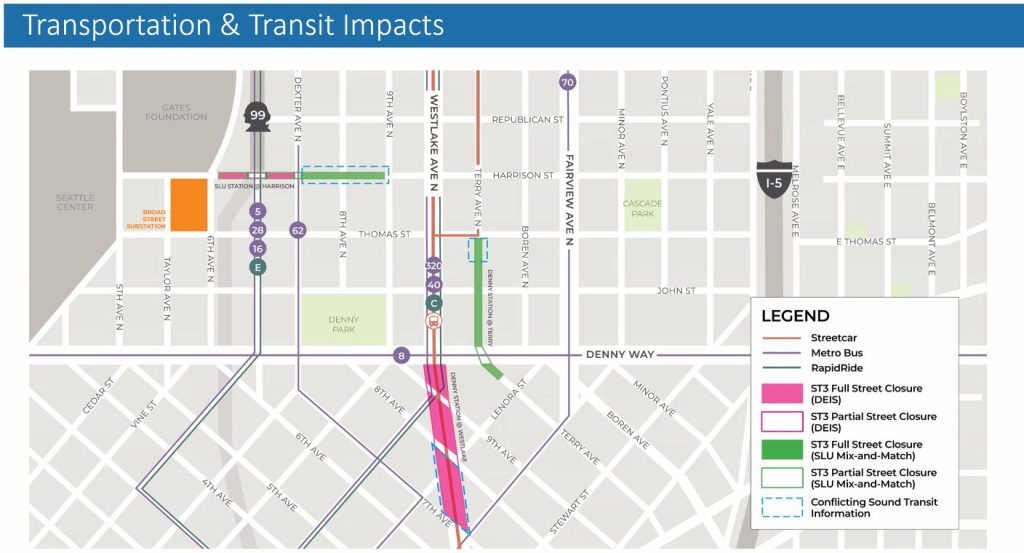
If the board opts to add the new 5th Avenue alternative to the Draft EIS that would entail planning delays that the agency estimates at ten months if the option is ultimately passed over, or up to two years if it becomes the preferred alternative, which would necessitate further engineering work the other vetted options have a head start on. Since time is money when it comes to construction and inflation, that delay could be very costly, as Eric Goldwyn, a transportation planning expert who serves on Sound Transit’s Technical Advisory Group, noted.
“The decision to study a new station alternative will cost ~$800,000 in consultant fees,” Goldwyn said in a tweet. “It will likely delay the project by a year, which, just in inflation terms could cost [about] $750,000,000, assuming 5%. Pencils down!”
However, the architects of the new option argue that the planning delay is worth it because the agency will make the time up with faster construction compared to the existing preferred alternative, which they portray as deeply flawed. After growing frustrated with the direction of the project through Denny Triangle and South Lake Union, Vulcan had their own team, including top engineering consultants, study alternative alignments. The result was the 5th and Harrison proposal that Sound Transit is now weighing via its own feasibility study.
Vulcan and its allies argue that the new “Shifted West” alignment is needed for both stations because of construction challenges with the existing station sites. The agency’s preferred alternative would risk project timelines, cost overruns, and unpalatably long and severe construction impacts, they contend. Vulcan’s chief real estate officer Ada Healey testified before the board Friday in support of adding the new Shifted West alternative, as did representatives from Amazon, the Downtown Seattle Association, the Seattle Metropolitan Chamber of Commerce, the Seattle Hotel Association, South Lake Union Community Council, and a local restaurant.
“The board’s current preferred alternative Westlake Shifted North is not the solution,” Healey said. “The Westlake Shifted North station on Denny results in at least eight years of construction, as opposed to the estimated four years of construction for Westlake Shifted West. In addition, a South Lake Union station at 7th and Harrison when paired with Westlake Shifted North will result in cost overruns for many years of utility relocation work that is not yet incorporated into project estimates. A 5th and Harrison station could avoid years of utility relocations.”
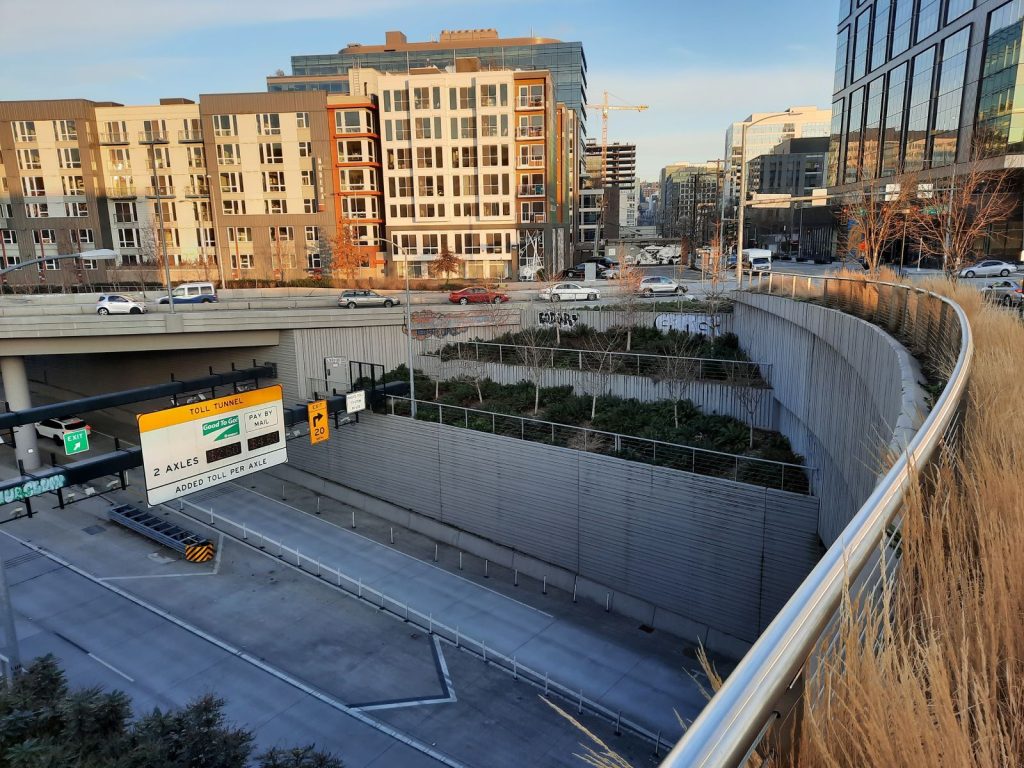
Broad Street Substation is Seattle City Light’s largest and it is located just west of the 7th Avenue site, and, after SR 99 tunnel work forced an overhaul of utility lines, a wide array of feeders travel under Harrison Street toward South Lake Union and Denny Triangle. The station work on 7th Avenue would require relocating several utility vaults and feeder lines, work that the Vulcan team says could add two years to construction timelines beyond what’s accounted for currently in project plans. Vulcan said its alternative location would not conflict with the substation to nearly the same degree since most of the feeders are headed east toward downtown.
“We appreciate the planning schedule concerns,” Healey added. “However, with careful planning we stand to shave years off the construction schedule, outweighing a little additional planning time. Our technical advisors have studied 5th and Harrison and they told us it’s feasible — we’ve shared this information with Sound Transit staff, but they’ve yet to incorporate it into project cost or schedules. What’s more, the new option achieves neighborhood goals for mitigating harm to the regional economic engine and Westlake Avenue, all while retaining a second South Lake Union station.”
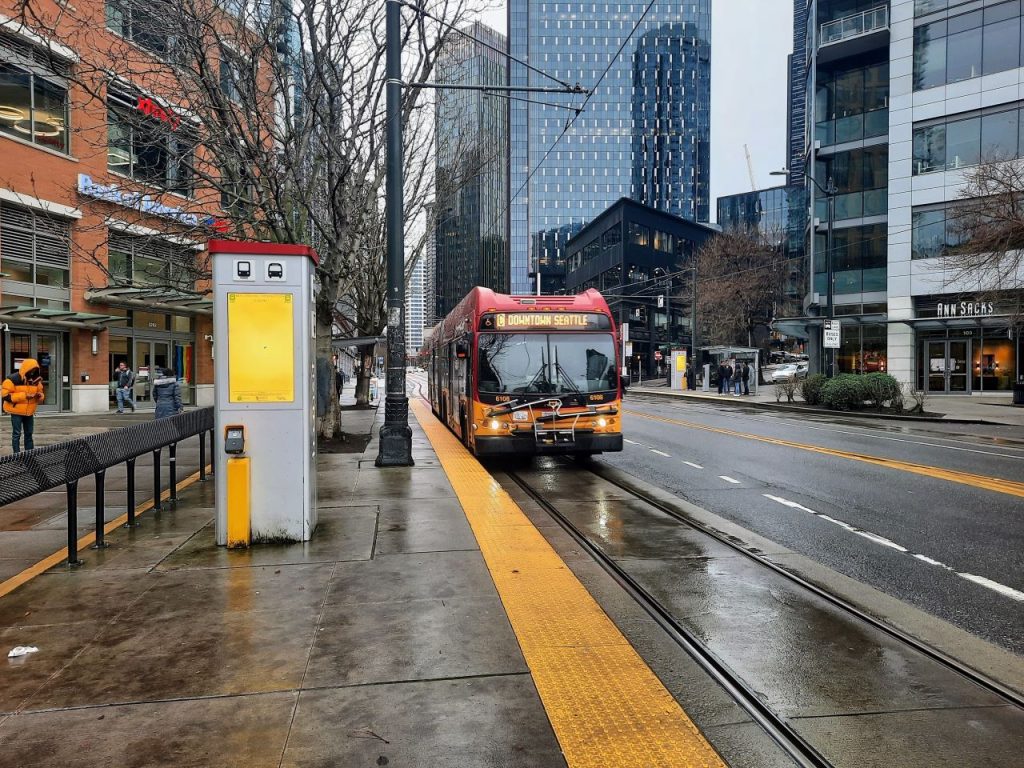
The Urbanist has already covered the opposition to the Denny and Westlake station option, which is largely built on the premise that the surrounding neighborhood could not weather an extended closure of Westlake Avenue during station construction — and wouldn’t be much better off with an alternative construction plan that would keep two lanes open, but entail a partial street closure that could last as long as 10 years.
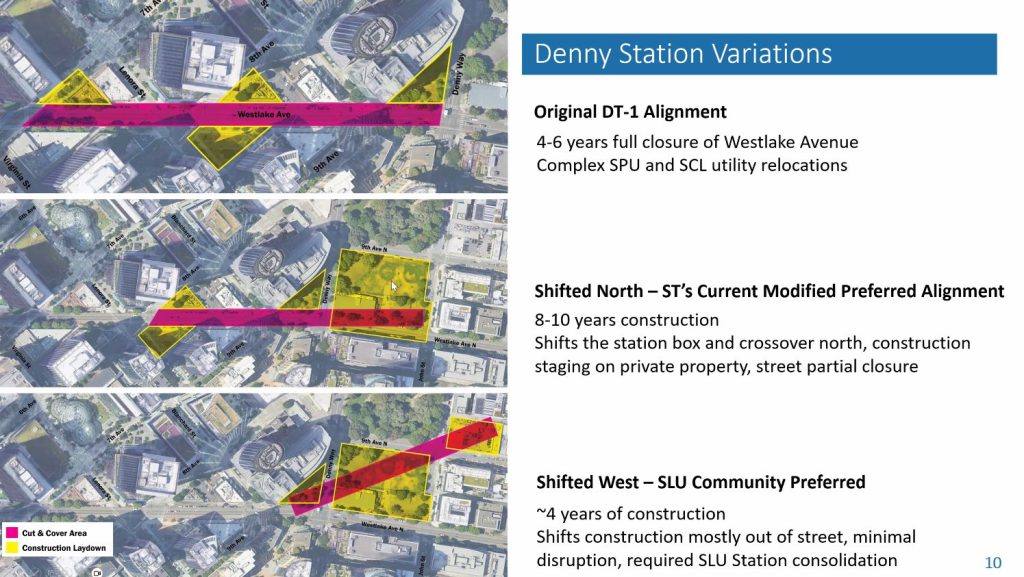
While traffic volumes on Westlake Avenue south of Denny Way aren’t particularly heavy — the City’s latest traffic data found just 9,100 daily vehicles on Westlake and volumes drop precipitously the farther south you go — the street is a transit artery and has turned into a commercial focal point neighborhood boosters have argued is irreplaceable and key to neighborhood vitality. Amazon public policy manger Jared Axelrod reiterated just such an argument Friday.
“Any multi-year construction project that impedes on the progress made to date would not only jeopardize the long term health of downtown, but also the short-term prospects of small businesses that need our collective support to help revitalize the neighborhood,” Axelrod said. “We remain committed to doing our part to help strengthen the South Lake Union and Denny Regrade communities as evidenced by the thousands of Amazonians who are back in the office and patronizing the small businesses. But we hope that this agency won’t actively work against those efforts by forcing harmful long-term construction impacts right into the heart of the neighborhood, particularly when there are quality and we believe superior alternatives on the table. So that’s why we believe that a 5th and Harrison station coupled with the Denny Shifted West station is a win-win solution, and we strongly urge your support.”
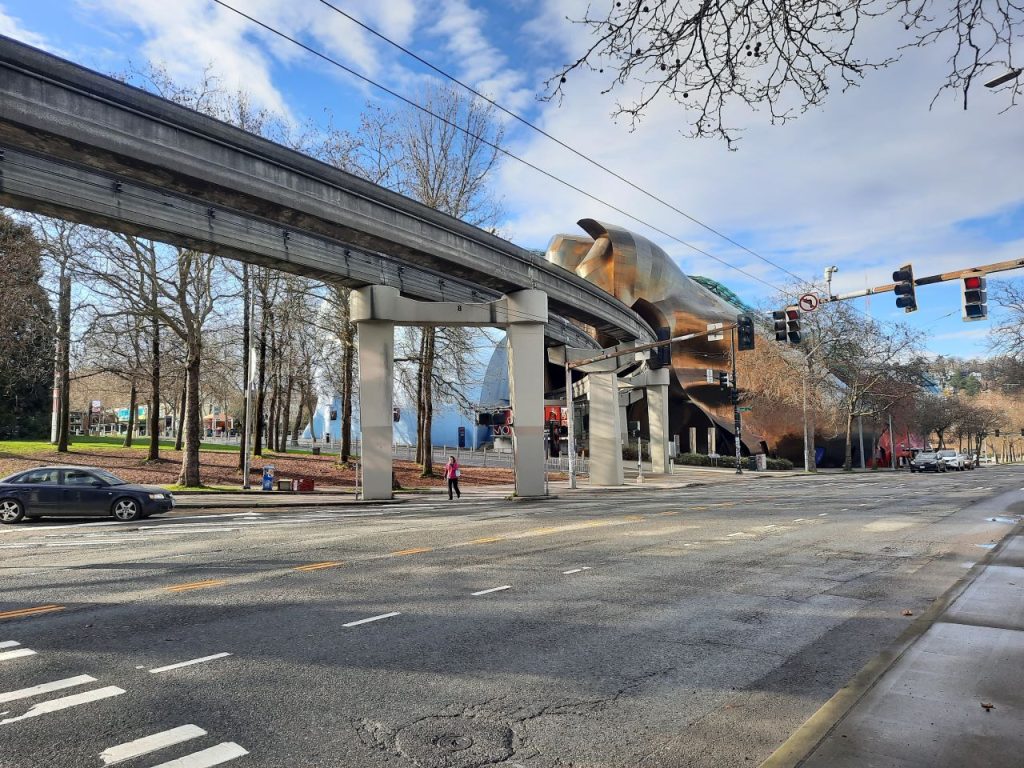
Arguments from Amazon, Vulcan, and allies won the day Friday, but, as some stakeholders declared victory, another emerged to declare new opposition. Museum of Pop Culture (MoPOP) CEO Michele Smith testified against the motion and the 5th Avenue station location.
“The Museum of Pop Culture is a iconic building, serving many millions of visitors in our community. We heavily rely on the attendance and the donations to keep our doors open to the public,” Smith said. “The location of a major construction project on the corner of 5th Avenue North and Harrison a crosswalk away from our museum is problematic for several reasons: the extensive construction noise and vibration — while there’s no vibrational study that is going to be included in the DEIS that you’re proposing today — there’s also museum attendance impacts and extreme revenue loss.”
It appears most stakeholders are excited to have light rail if its sited a few blocks away. Few are excited to host the station and construction work on their immediate block. It’s a challenge Sound Transit will need to overcome since no block is without its defender and aggrieved stakeholder, meaning somebody will have to live with the construction impacts in close proximity.
Why Sound Transit’s planning process has not been able to grapple with these outstanding concerns, properly vet alignments, and forge a stronger consensus is an open question, but one that sorely needs to be answered to ensure smoother sailing going forward. Whatever alignment is selected, riders want confidence that project schedule promises can be met, if not accelerated, rather than seeing an unrelenting wave of delays.
Doug Trumm is publisher of The Urbanist. An Urbanist writer since 2015, he dreams of pedestrian streets, bus lanes, and a mass-timber building spree to end our housing crisis. He graduated from the Evans School of Public Policy and Governance at the University of Washington in 2019. He lives in Seattle's Fremont neighborhood and loves to explore the city by foot and by bike.

